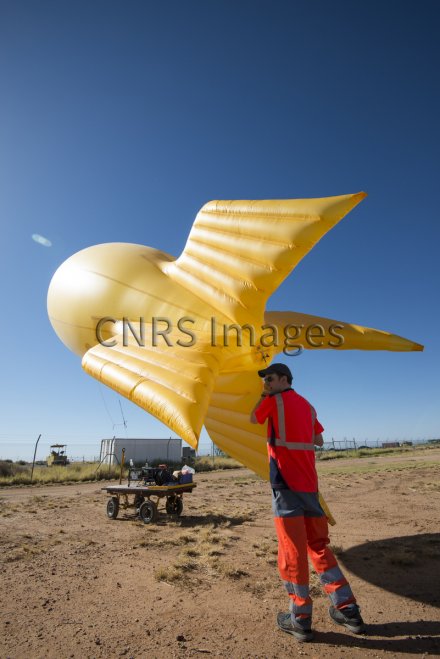Production year
2017

© Sébastien CHASTANET / CNES / OMP / IRAP / UT3 / CNRS Images
20170104_0022
A tethered balloon is used to identify the wind direction in preparation for the PILOT, CLIMAT and CARMEN/CASOLBA missions at the Alice Springs balloon launch base in Australia. These yellow balloons indicate the wind direction at altitudes of up to 200 m. To maximise the flight altitude and duration, balloon launches for the various missions must be planned to coincide with stratospheric wind inversions. The research team therefore consulted data from satellites, radiosonde balloons and tethered balloons, as shown here, in search of the ideal meteorological conditions. The mission gondolas, lifted by helium-filled balloons, were launched to an altitude of several tens of kilometres in April 2017. Measurements are more economical and simpler to perform using balloons than using satellites. Balloons are able to gather data that would be impossible to collect using ground-based telescopes, as the Earth's atmosphere partially blocks cosmic radiation.
The use of media visible on the CNRS Images Platform can be granted on request. Any reproduction or representation is forbidden without prior authorization from CNRS Images (except for resources under Creative Commons license).
No modification of an image may be made without the prior consent of CNRS Images.
No use of an image for advertising purposes or distribution to a third party may be made without the prior agreement of CNRS Images.
For more information, please consult our general conditions
2017
Our work is guided by the way scientists question the world around them and we translate their research into images to help people to understand the world better and to awaken their curiosity and wonderment.